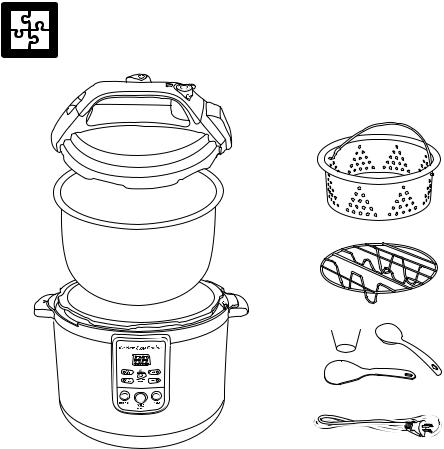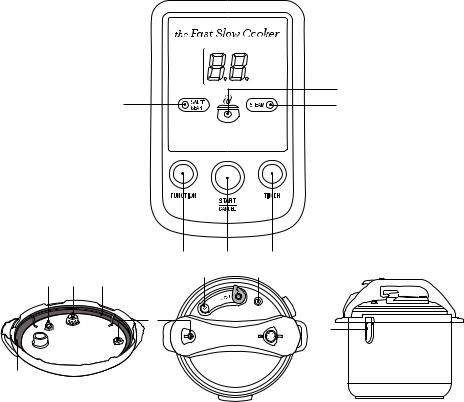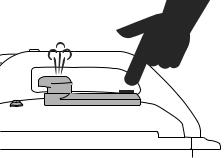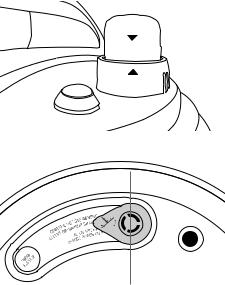Breville BPR650BSS Instruction Handbook

the Fast Slow Cooker™
Instruction Book - BPR650

 Contents
Contents
IMPORTANT SAFEGUARDS
2 Breville Recommends Safety First
10 Components
16 Quick Start Guide
18 Functions
37 Care & Cleaning
40 Troubleshooting
BREVILLE RECOMMENDS SAFETY FIRST
At Breville we are very safety conscious. We design and manufacture consumer products with the safety of you, our valued customer, foremost in mind. In addition we ask that you exercise a degree of care when using any electrical appliance and adhere to the following precautions.
READ ALL INSTRUCTIONS BEFORE USE AND SAVE FOR FUTURE REFERENCE
•Remove and safely discard any packaging material and promotional labels before using the Breville Fast Slow Cooker for the first time.
•To eliminate a choking hazard for young children, remove and safely discard the protective cover fitted to the power plug of
this appliance.
•Do not immerse appliance base, power cord or
plug in water or any other liquid.
2
•Always insert the connector end of the power cord into appliance inlet inserting power plug into power outlet and switching on appliance. Ensure the appliance inlet is completely dry before inserting the connector end of the power cord.
•This appliance cooks under pressure. Improper use may result in injury. When using this appliance for any function other than sauté, ensure the lid is properly assembled and locked into position before use.
•Do not place Breville Fast Slow Cooker near the edge of a bench or table during operation. Ensure that the surface is level, clean and free of water and other substances.
•Do not operate Breville Fast Slow Cooker on a sink drain board.
•We recommend the slow cooker is not placed on a stone bench top when it's cooking. This is due to bench tops being sensitive to uneven heat and may crack if heated
locally. If you would like to cook with the slow cooker on the bench top, place a chopping board or heat proof mat underneath the slow cooker.
•Never move the Pressure Cooker when in use
or whilst the cooker is still under pressure.
Movement may result in inadvertent movement of the pressure release valve/ release valve resulting in unexpected steam or hot liquid being released from the pressure release valve or the side of the lid which may cause scalding.
3
•Do not place this appliance on or near a hot gas burner, electric element or where it could touch a heated oven. Position Breville Fast Slow Cooker at a minimum distance of 20cm away from walls and provide adequate space above and all sides for air circulation.
•Keep the Breville Fast Slow Cooker clear of walls, curtains and other heat or steam sensitive materials.
•Do not touch hot surfaces. Use handles on the sides of appliance and on lid. Use the button to release steam pressure.
•Always ensure Breville Fast Slow Cooker is properly assembled before use. Follow the instructions provided in this book.
•Before placing removable cooking bowl into stainless steel base ensure base of bowl and base of appliance is dry by wiping with a dry soft cloth.
•Do not place food or liquid directly into stainless steel base. Only removable cooking bowl is designed to contain food or liquid.
•Always follow the maximum and minimum quantities of liquid stated in instructions and recipes.
4
•Do not exceed maximum fill level. Some foods expand during pressure cooking such as rice, diced vegetables, do not fill removable cooking pan over ½ full. Over filling may cause a risk of clogging pressure release valve and safety locking pin valve and develop excess pressure.
•Do not use a damaged removable cooking bowl. Replace before using.
•Ensure that lid is properly closed before operating (see step 4 page 22).
•Do not use Breville Fast Slow Cooker for other than it’s intended use. Do not attempt to operate Breville Fast Slow Cooker by any method other than those described in this book.
•Removable cooking bowl can be extremely heavy when full of ingredients, care should be taken when lifting from Breville Fast Slow Cooker base.
•Always check pressure release valve and safety locking pin valve for clogging before use and clean if necessary. Check to make sure the safety locking pin moves freely from under the lid.
•Extreme caution must be used when appliance contains hot food and liquids and/or is under pressure. Improper use may result in injury. When using this
appliance for any function except sauté, make sure the lid is properly locked before operating.
5
•Do not use the lid handle to carry appliance when in use and after use.
•Do not attempt to open Breville Fast Slow Cooker lid after pressure cooking until all internal pressure has been released and
is slightly cooled. If the lid will not turn to
unlock, this indicates that appliance is still under pressure – do not force lid open. Any pressure remaining can be hazardous. See operating instructions for STEAM RELEASE directions in this instruction book (see step 10–12 page 24).
•Always ensure that removable cooking bowl has cooled sufficiently before handling and use oven mitts as
a precaution.
•Do not touch hot surfaces. The heating element/ plate surface is subject to residual heat after use.
•The Breville Fast Slow Cooker is not intended to be operated by means of an external timer
or separate remote control system.
•Do not place anything, other than lid, on top of Breville Fast Slow Cooker when assembled, when in use and when stored.
•Do not adjust the pressure release valve while cooking.
•Use only recommended STEAM RELEASE to depressurize cooker after use (see step 10–12 page 24).
6
•Do not use this cooker for deep frying.
•Do not sauté or shallow fry under pressure.
•Always ensure there is enough liquid in
removable cooking bowl when steaming. At least 4 cups (1 litre) of liquid is required when steaming.
•Always ensure START/ CANCEL has been pressed to CANCEL, then turn the power off at the power outlet and remove power plug from the power outlet before attempting to move the
appliance, when appliance is not in use and before cleaning and storing.
•To protect against electric shock, do not immerse Breville Fast Slow Cooker base, power base, power cord or power plug in water or allow moisture to come in contact with these parts.
•Keep Breville Fast Slow Cooker clean. Follow the cleaning instructions provided in this book (see page 37).
7
IMPORTANT SAFEGUARDS FOR ALL ELECTRICAL APPLIANCES
•Fully unwind the power cord before use.
•Do not let the power cord hang over the edge of
a bench or table, touch hot surfaces or become knotted.
•To protect against electric shock do not immerse the power cord, power plug or appliance in water or any other liquid.
•The appliance is not intended for use by persons (including children) with reduced physical, sensory or mental capabilities, or lack of experience and knowledge, unless they have been given
supervision or instruction concerning use of
the appliance by a person responsible for their safety.
•Children should be supervised to ensure that they do not play with the appliance.
8
•It is recommended to regularly inspect the appliance. To avoid a hazard do not use the appliance if power cord, power plug or appliance becomes damaged in any way. Return the entire appliance to
the nearest authorised Breville Service Centre for examination and/or repair.
•Any maintenance other than cleaning should be performed at an authorised Breville Service Centre.
•This appliance is for household use only.
Do not use this appliance for anything other than its intended use. Do not use in moving vehicles or boats. Do not use outdoors. Misuse may cause injury.
•The installation of a residual current
device (safety switch) is recommended to
provide additional safety protection when using electrical appliances.
It is advisable that a safety switch with a rated residual operating current not exceeding 30mA be installed in the electrical circuit supplying the appliance. See your electrician for professional advice.
FOR HOUSEHOLD USE ONLY SAVE THESE INSTRUCTIONS
9

Components
B |
C |
|
|
||
A |
I |
|
D |
||
|
J
E
F
K 
 L
L
M
G
H
A.Lid handle
B.Pressure release valve
Controls rate at which steam vents out of cooker and subsequently degree of pressure inside the cover.
C.Adjustable pressure control dial
Choose from Low, Medium or High.
D.Safety locking lid
Can not be opened whilst pressure cooking. Not dishwasher safe.
E.6 Litre removable non-stick cooking bowl
Dishwasher safe.
F.Cool touch handles
G.Brushed stainless steel base & lid
10
H.Removable power cord
For serving at table & easy storage.
Accessories
I.Stainless steel steaming basket
Dishwasher safe.
J.Stainless steel trivet
Raises food out of liquid for roasting, steaming and pressure cook or slow cook settings.
K.Rice duo measuring cup
L.Serving spoon
M.Heat resistant spatula
To avoid scratching non stick surface of cooking bowl.

|
c) |
a) |
d) |
b) 







 e)
e)
N O P
V R
R S T
U
W
Q
Control Panel
N.Function button
Press to select desired cooking method.
Setting selection
a)SAUTE/SEAR Indicator Light
Sear and brown meats plus saute onions and garlic, before pressure cooking or slow cooking.
b)SLOW COOK Indicator Light
Select from 6 hours or 8 hours.
c)PRESSURE COOK Indicator Light
d)STEAM Indicator Light
e)WARM Indicator Light
Automatic or manual.
O.Start/cancel button
P.Timer button
Sets cooking time.
Q.Silicone rubber sealing gasket
Dishwasher safe.
R.Pressure safety valve
S.Pressure release valve cover
T.Gasket holder
U.Safety locking pin
Pin pops up once pressure is reached acting as a safety device.
V.Steam release button
Press the button in short bursts until safety locking pin drops down, then the lid can be opened.
W.Steam condensation collector
Dishwasher safe.
11

Important Safety Information For
Your Fast Slow Cooker™
NEVER FORCE THE COOKER LID CLOSED
•The lid should be effortless to close.
It should only require the use of one hand in a smooth action. If you encounter resistance, do not force the lid into position.
•The lid is correctly locked when the locking arrows are aligned and the safety locking pin is in the down position.
•Forcing the lid onto the cooker can cause air to become trapped and the locking pin to rise prematurely making it difficult to close.
•If the lid is difficult to close, check and ensure the seal is correctly installed. Turn the pressure release valve so that it is not in the “Pressure” position. This will assist with reducing the resistance when closing the cooker lid.
RELEASING PRESSURE
•Never place your hands, arms or face over the pressure release valve when the cooker is in use.
•Pressure can be released by pressing and holding the steam release button on the lid. This should be initially done in short
bursts to prevent large jets of steam being released.
12

Using a wooden spoon to turn the pressure release valve into the open position will assist with a fast steam release, take care as the jet of steam may be hazardous.
•Soups, stocks and recipes with a lot of liquid can force liquid through the pressure release valve during pressure release. Release pressure in intervals by pressing and releasing the steam release button or switch off the cooker and let it depressurise naturally.
Quick Release
This method uses the Steam Release Button when there is no more steam coming out, turn the pressure release valve to "steam release position".
Wait a minimum 1 minute after releasing pressure/ steam to unlock and remove the lid. To open the lid, use handle in a counterclockwise direction while aligning ALIGN arrows to the OPEN position. This should be effortless.
13

Side view
OPEN
Top view
 IMPORTANT
IMPORTANT
Steam Release Button will be hot if pressed for prolonged period.
Slow Release
If the Steam release button is not depressed when cooking is finished, the cooker will slowly de-pressurize when the temperature drops towards room temperature. This method is recommended for recipes containing larger quantities of
liquid such as soups and casseroles to prevent liquid being forced out with the steam. The Slow release method is also used to finish off recipes such as risottos and puddings.
When slow release method is used, it is necessary to push the steam release button to ensure there is no more steam coming out and turn the pressure release valve to the "steam release position" where arrows are aligned to OPEN arrow before attempting to open the lid.
14
